 |
Pine identification
Pine needles are attached to twigs and branches in clusters of two, three or five. The needles of Eastern white pine (Pinus strobus) are attached in clusters of five. Needles are 2 to 4 inches long, soft to the touch and pliable. Cones are 3 to 7 inches long and attached with a stalk.
There are other pine trees grown in the St. Louis area that might be confused with Eastern white pine. In particular, Austrian pine (Pinus nigra) and Scotch or Scots pine (Pinus sylvestris). The needles of both are attached in two-needle clusters.
|
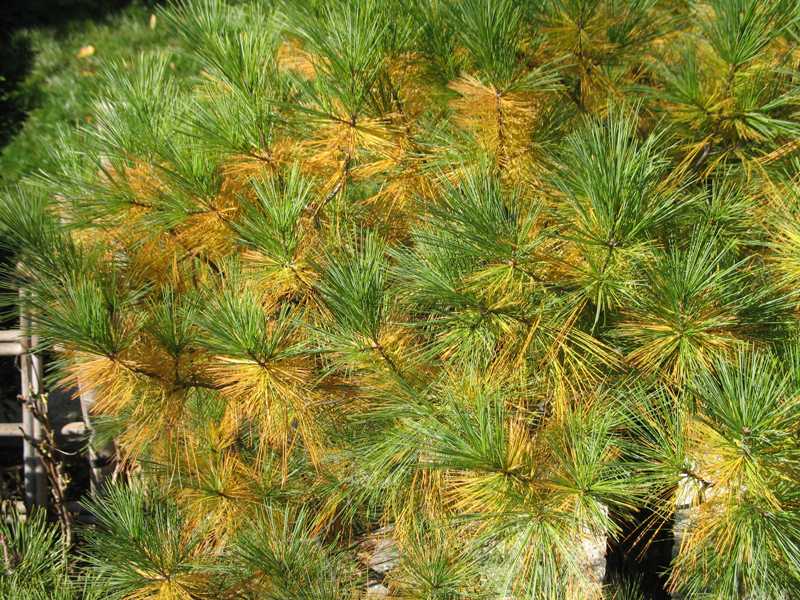 |
Annual needle drop
Pines drop older needles annually. Home gardeners may be alarmed thinking that their tree is dying but it is perfectly normal and no cause for concern. The older, innermost needles of Eastern white pines often yellow all at once in a very noticeable display that usually occurs in autumn but can occur in spring. Note that the newer needles and growing tips are still green and healthy.
|
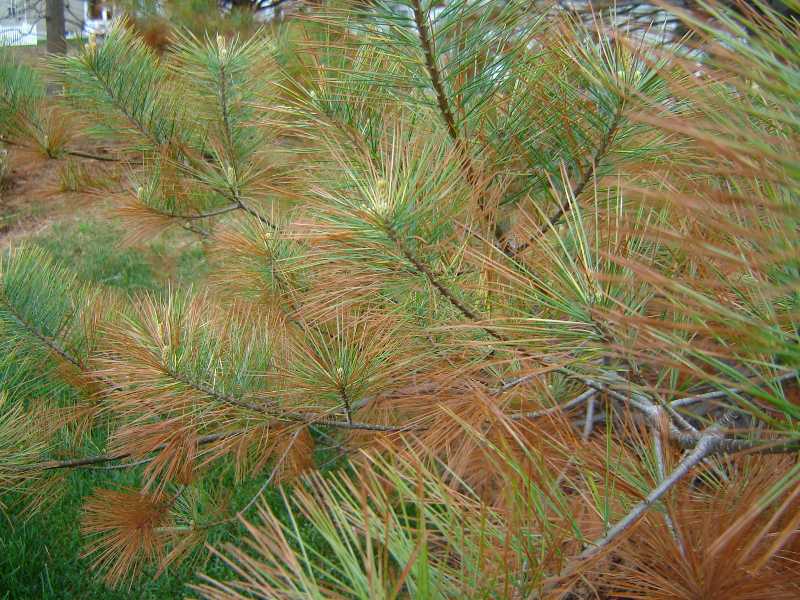 |
Injury from salt spray
White pines are very susceptible to injury from salt applied to roads and should never be planted in areas near roads. Symptoms include browning needles, especially on lower branches on the side closest to salt application.
Look-alikes: Winter burn (more prevalent on sides exposed to sun and wind)
|
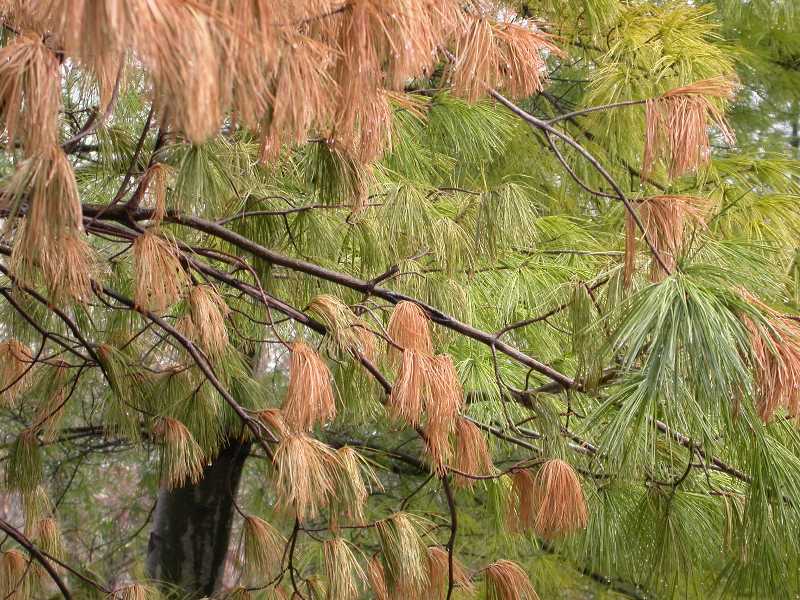 |
White pine decline
Starts as pale green or off-color limp, drooping needles that later turn brown. The bark may be spongy and may shrivel and ooze sap. Usually the entire tree is affected at once, often indicating a root problem. Cause is thought to be a combination of environmental stresses that lead to decline. Trees usually do not recover and death occurs within four weeks.
Look-alikes: 1) Off-color needles can be the result of high soil pH. 2) Pines with pine wilt disease (pinewood nematodes) show similar symptoms but white pines are NOT susceptible to pine wilt.
|
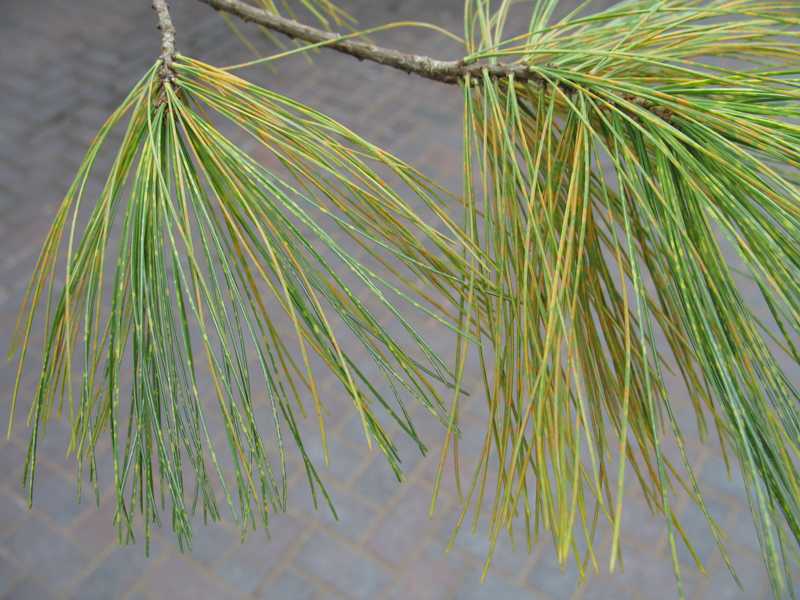 |
Ozone damage
Ozone is the most damaging air pollutant to plants. Symptoms include: yellow mottling or brown to black banding at the same point on all needles in a bundle (needle cluster) producing a zebra pattern, tip burn, dwarfing, and a tufted appearance due to early defoliation of innermost needles. Lack of fruiting bodies distinguishes ozone damage from fungal diseases.
Look-alikes: Annual needle drop
|
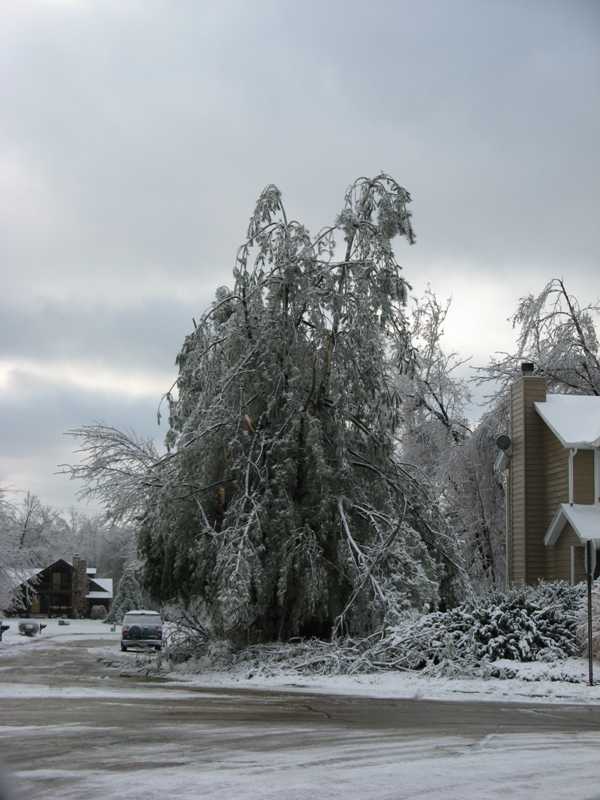 |
Ice damage
The weight of ice collecting on the needles of conifers can cause limb breakage and damage. The greater surface area of evergreens makes them more susceptible to ice damage than deciduous trees.
|
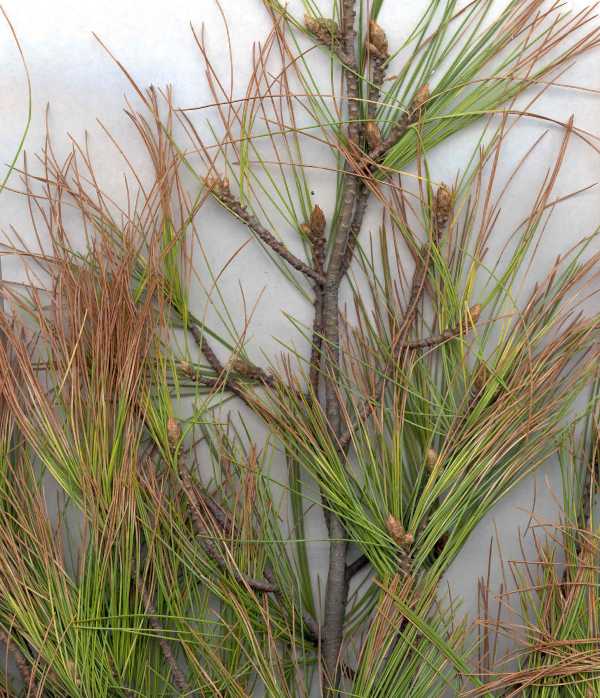 |
Winter burn
Desiccation or winter burn of needles appears as discolored needles that are reddish brown at the tip fading inward to yellow-brown then yellow then green. In severe cases the discoloration progresses all the way to the base of the needles and from outer branches inward. Damage is more severe on the side of the tree exposed to sun and wind (i.e., south and west sides).
Look-alikes: Salt damage (on side facing salted pavement).
|
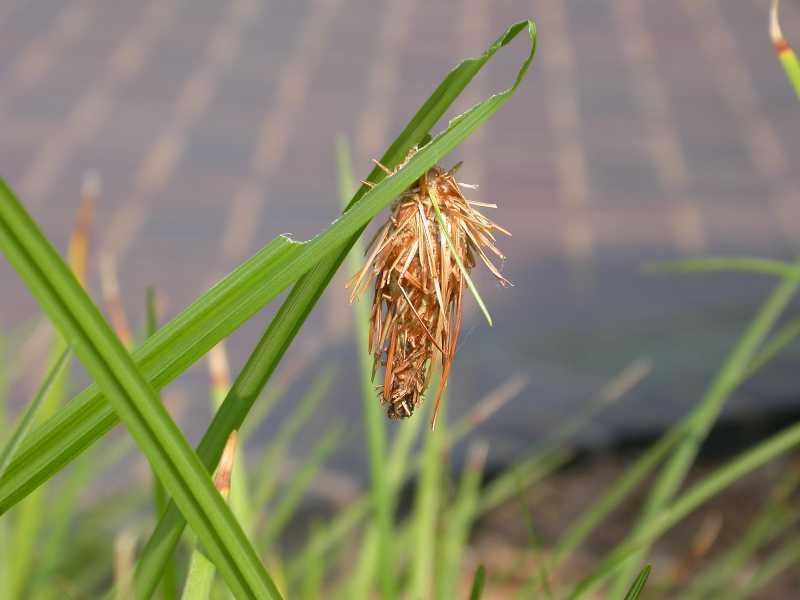 |
Bagworms
Symptoms include defoliation, partially chewed needles that often brown where chewing has occurred, and the presence of conical hanging bags composed of chewed needles and bits of twigs.
Look-alikes: Bagworms are sometimes mistaken for small pine cones.
|
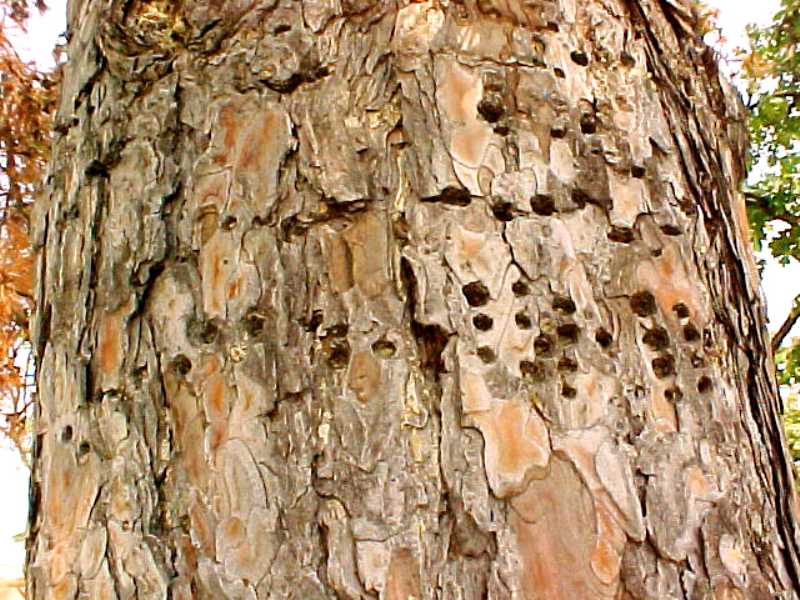 |
Yellow-bellied sapsuckers
Yellow-bellied sapsuckers are woodpeckers that create rows of holes on the trunks of certain trees and often return to the same trees year after year, along with their offspring. Heavy feeding can damage young trees.
Look-alikes: borers (holes would be randomly spaced and not in rows).
|
| |
Other problems
Pine wilt (pinewood nematodes) is NOT a problem on white pine.
Brown spot needle blight, although a problem elsewhere, is not common in the St. Louis area.
Procera root rot, although a problem in the South, is not a common problem in the St. Louis area.
|
| |
Last updated: 11/2011 View a pdf of this guide |